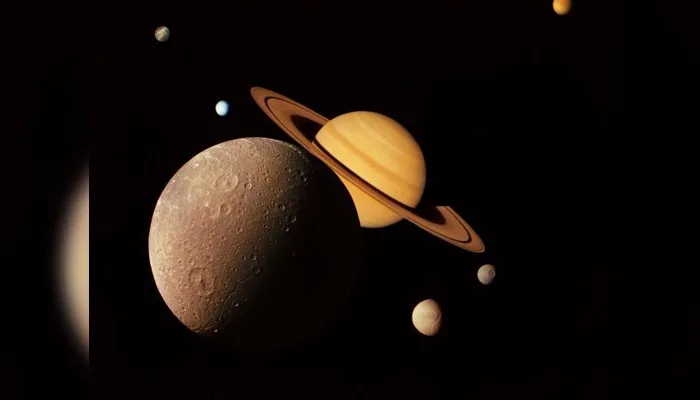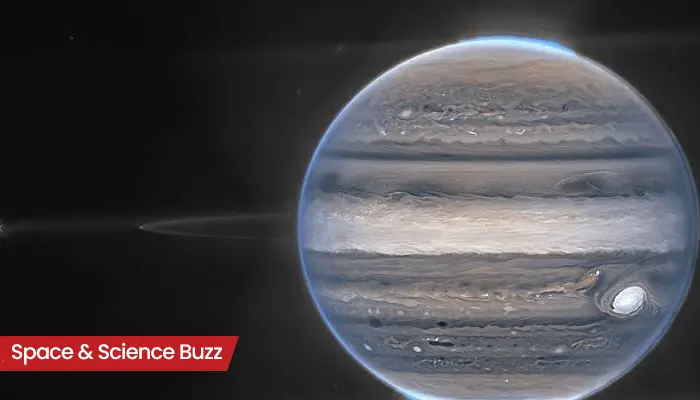.webp)
Here are today’s most important updates from the realm of Science and Space.
Susumu Kitagawa, Richard Robson & Omar Yaghi win 2025 chemistry Nobel prize for work on metal-organic frameworks
Susumu Kitagawa, Richard Robson and Omar M. Yaghi are awarded the Nobel Prize in Chemistry 2025 for the development of a new type of molecular architecture. The constructions they created metal-organic frameworks – contain large cavities in which molecules can flow in and out. Researchers have used them to harvest water from desert air, extract pollutants from water, capture carbon dioxide and store hydrogen. Through the development of metal-organic frameworks, the laureates have provided chemists with new opportunities for solving some of the challenges we face.
Astronaut Spots Space Train! Starlink Satellites Glide in Perfect Formation
My best sighting of a Starlink satellite "train" from orbit! pic.twitter.com/WratClL8NJ
— Don Pettit (@astro_Pettit) October 7, 2025
(Credit: X/@astro_Pettit)
NASA astronaut Don Pettit has shared a mesmerising video from his mission on the International Space Station (ISS), capturing dozens of SpaceX Starlink satellites gliding across Earth’s night side in a spectacular orbital formation. The footage, filmed from one of the ISS observation windows, shows the satellites streaking in unison like a chain of glowing fireflies, with the planet’s green-and-blue aurora and city lights shimmering far below. In the clip, the satellites appear as a string of bright dots moving gracefully against the dark expanse of space, illuminated by reflected sunlight as Earth glows beneath them. The effect is both surreal and poetic, evoking comparisons to bioluminescent creatures drifting through a dark ocean.
A Perfect Cosmic Habitat: Saturn’s Moon Could Host Alien Life

Scientists have found new evidence suggesting Saturn's icy moon Enceladus may harbour conditions suitable for alien life, according to a study published in Nature Astronomy. A team from the University of Stuttgart analysed tiny ice grains ejected through cracks in Enceladus' surface, using decades-old data from NASA's Cassini spacecraft. These grains contain complex organic molecules, indicating the moon "ticks all the boxes" for potential habitability, lead researcher told. Enceladus, despite its frigid average temperature of -330 Fahrenheit, is known to have a vast underground ocean beneath its thick ice Fahrenheitshell. Water plumes erupting from fissures near its South Pole have long suggested active hydrothermal processes that might support life. Cassini's Cosmic Dust Analyser collected ice particles from these plumes during flybys, but older samples could have been altered by cosmic radiation.
Clearing Lungs, Clouding Skies: Study Links Inhalers to Massive CO₂ Emissions

Inhalers used to treat asthma and chronic obstructive pulmonary disease (COPD) may be contributing significantly to carbon emissions, according to a new study by UCLA Health. The research, published in JAMA, is the largest of its kind to assess the environmental impact of inhalers in the US. The study found that inhalers produced more than 2 million metric tons of carbon emissions each year over the past decade, roughly equal to the annual emissions of 530,000 gasoline-powered cars. In contrast, dry powder inhalers and soft mist inhalers do not rely on propellants and have a far smaller carbon footprint. Researchers suggest that switching to these lower-emission alternatives, when medically appropriate, could reduce the environmental impact of respiratory care.

.WEBP)
.WEBP)

.webp)
.WEBP)
.webp)
.webp)

.WEBP)
.webp)
.webp)
